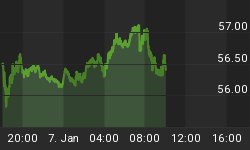Retirement means something quite different in America today: Increasingly, it is being redefined as “laboring in old age”. In fact, the Baby Boomers that are now reaching retirement age are still playing a key role in the American workforce--but not necessarily by choice.
Seniors are mostly working longer because they need the money. Hikes in Social Security's retirement age, massive health-care costs, depleting savings and high levels of personal debt have made it harder than it was in the 1960s and 1970s to retire.
According to a new report from money manager United Income, the participation rate in the labor force of retirement-age workers has topped the 20-percent mark for the first time in 57 years.
“As of February, the ranks of people age 65 or older who are working or seeking paid work doubled from a low of 10 percent back in early 1985,” the report found.
What’s worse is this: The upward trend is expected to continue, with the report estimating that 13 million Americans aged 65 or older will be in the labor force by 2024.
While some switch to new jobs within their long-time careers, for others a retirement job means trying something entirely new. According to the data, the most popular jobs of 65+ people including accounting, teacher assistants, retail…
However, not everybody can work longer. As workers with desk jobs can work past retirement age, the ones working hard labor can’t. About 10 percent of those over 50 had to leave their jobs because of health.
Related: Strong U.S. Dollar Weighs On Blue Chip Earnings
And there is no getting around the obvious here: At the core of the problem is the cost of healthcare and prescription drugs--the number one biggest threats to retirement solvency.
A recent study by Gallup entitled “The US Healthcare Cost Crisis” found that seniors last year withdrew an estimated $22 billion from their long-term savings for health-related expenses.
The report also found that some 10 percent of Americans aged 65 and older did not seek needed treatment in the past 12 months because of the cost of care.
And the future seem to be just as grim, if not worse.
A study by the Schwartz Center for Economic Policy Analysis finds that about 40% of middle-class Americans will live close to or in poverty by the time they reach retirement age.
On a rare positive note, older workers are not only growing rapidly in numbers, but are also becoming substantially healthier and no longer feel that the traditional retirement age is an expiration date.
Of Americans aged 65 or older and working or looking for work, 78 percent report being in good health or better, up from 73 percent in 1997 and 69 percent in 1985. And since manufacturing jobs are being overtaken more frequently by desk jobs or jobs that require less physical activity, age isn’t quite the barrier to employment that it used to be.
Related: How Millennials Are Reshaping Real Estate
Economists have also found that retiring at age 66, instead of 62, can raise a retiree’s standard of living by one-third.
Employers aren’t complaining because the elderly workers are better educated and more experienced in many cases than their younger colleagues. The share of all employees aged 65 or older with at least an undergraduate degree is now 53 percent, up from 25 percent in 1985. This pushed up the average real income of retirement-age workers by 63 percent during this time period, from $48,000 to $78,000.
But the heart of the matter is that eternal American bogeyman of healthcare: The system is broken to the point that retirement is increasingly elusive and many are hoping that it will crack soon--and preferably before Baby Boomers end up workers as Walmart greeters just to survive.
By Fred Dunkley for Safehaven.com
More Top Reads From Safehaven.com

















